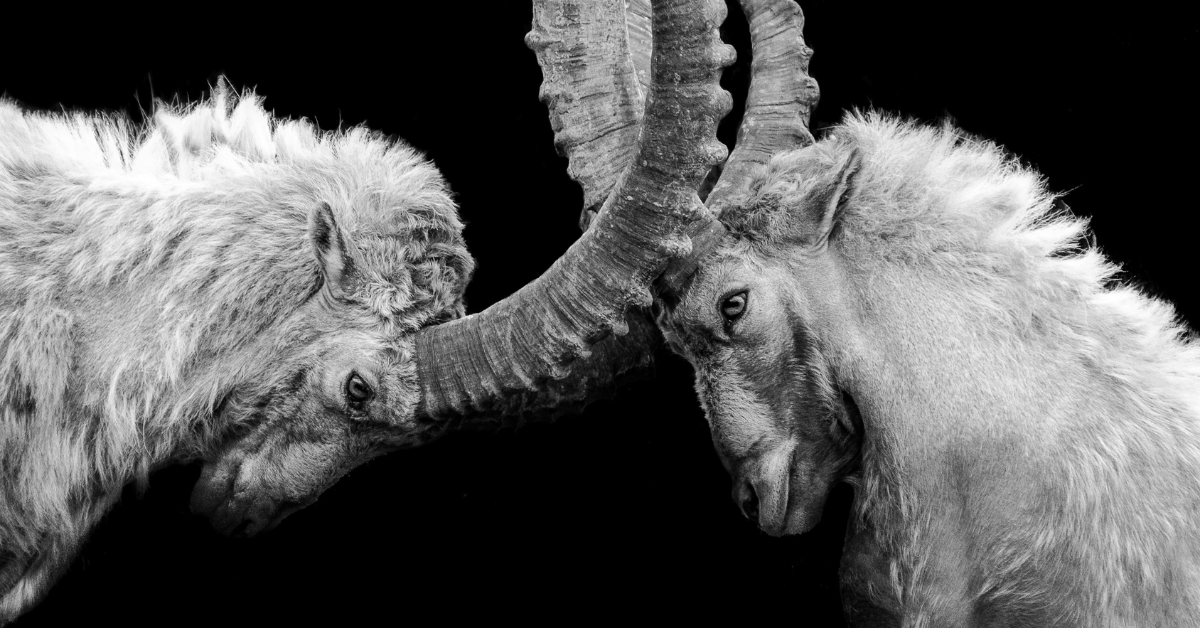
03 Oct Clash of horns: CABRÓ v. EL CABRÓN
The final round of the fight between the two goats, Masia Puigmoltó and Richards Brothers Group (RBG) is over, and the former, like a good Cabró, has left his opponent completely sprawled out on the ground.
Round 1
The fight began in the spring of 2021 when RBG (at the time, Java Trading) applied to the European Union Intellectual Property Office (EUIPO) for trademark No. 18480398  for goods in class 33.
for goods in class 33.
The Catalan Masia Puigmoltó prepared the attack and filed an opposition against the application, claiming that there was a likelihood of confusion with its Spanish trademark No. 370449  , also for goods in class 33.
, also for goods in class 33.
In December 2022, the Catalans received an early Christmas present, as the EUIPO upheld their opposition. Despite recognising the visual differences between the signs, with clearly differentiated logos, the Office recalled that the verbal element usually prevails, as it is usually the one that the consumer tends to remember. Thus, it ended up ruling that the signs are visually similar to a medium-low degree, phonetically very similar and conceptually identical if the consumer considers them to be ‘the male of the goat’.
It should be noted that the Office also took into account the definition of the Catalan and Spanish terms ‘cabró’/‘cabrón’ as ‘a person who plays tricks’ as an insult, but referred only to the Spanish word, considering that the Spanish consumer would tend to think that ‘cabró’ is an incorrect spelling of its Spanish version.
Round 2
A little stunned by the headbutt they had just received, but very determined, Java Trading took the bull by the horns by lodging an appeal against the decision.
Its main line of argument was that the visual impact of signs is very different and that the position, size and representation of figurative elements make them as, if not more, important than the verbal elements. Thus, the trademarks offer very different visual impacts, which cannot be minimised in the face of minor orthographic similarities between verbal terms.
At a conceptual level, the appellant broke their back to convince the Office that their trademark refers to the insult, whereas that of the Catalans, with the figure of the goat, clearly refers to the male goat. Therefore, they conclude, the trademarks are different in this respect as well.
El Cabrón only managed to hit the wall because the appeal was again dismissed in autumn last year.
Although in this second decision the Office acknowledges the impact of the figurative elements and considers that they cannot be disregarded, it recalls once again that 1) verbal elements generally predominate over figurative elements and 2) two marks are similar if there is at least a partial identity visually, phonetically or conceptually.
The Board of Appeal, therefore, reinforced the conclusions previously reached by the Office and confirmed that the trademarks were visually similar, at least below average, phonetically very similar and conceptually identical, because of their association with a goat (but conceptually different if consumers only perceived the mark applied for as an insult).
Round 3
Instead of laying low, RBG took the matter to the General Court of Justice of the European Union, before which they lodged an appeal trying to turn the matter on its head.
The owners of El Cabrón argued, on the one hand, that the visual difference between the signs is very relevant and, on the other, that it is precisely this difference that is reinforced in the conceptual aspect. Thus, they pointed out that not only are the animals represented different (a goat v. a snake), but that the attitude of the two animals is also significantly opposed: the bovine is peaceful, while the reptile is aggressive. According to RBG, this showed that conceptually the signs are different, because it is precisely the aggressiveness of the snake that means that the trademark does not refer to any animal, but to the insult. In fact, they argued that, in Spanish, the insulting meaning of the word ‘cabrón’ is so widespread that its speakers have forgotten that it also refers to the male goat.
However, no matter how much RBG was banging their head against the wall, on 18/09/2024 the General Court of the European Union finally dismissed the appeal and confirmed the existence of a likelihood of confusion between the conflicting marks.
On a visual level, the court considered that the Office had correctly assessed the differences between the figurative elements, which precisely determine that the overall visual similarity of the signs is below average.
On a conceptual level, the Court has established that, on the one hand, there are no arguments to show that Spanish speakers do not know that the male of a goat is called ‘cabrón’ and, on the other hand, that even if the Spanish consumer believes that the earlier trademark is an erroneous version of ‘cabrón’, this only reinforces the conceptual link. Moreover, it recognises that for Catalan speakers the trademarks are conceptually identical, whether they refer to the animal or to the insult.
Therefore, even if there are obvious graphic differences, their similarities on an orthographic, phonetic and conceptual level are undeniable.
Knockout Victory
Hence, the clash between the two billy goats has had a clear winner, Masia Puigmoltó, which has shown that the difference between the visual elements of two trademarks is not enough to avoid a certain risk of confusion when the verbal elements are similar, no matter how angry one gets. You can’t play the fool when it comes to registering trademarks, especially if you want to be the G.O.A.T!
You can see the original version of the sentence in the following link.
Author: Berta Benet Ferré, lawyer at Curell Suñol, SLP.
Photo by Maxime Gilbert on Unsplash



